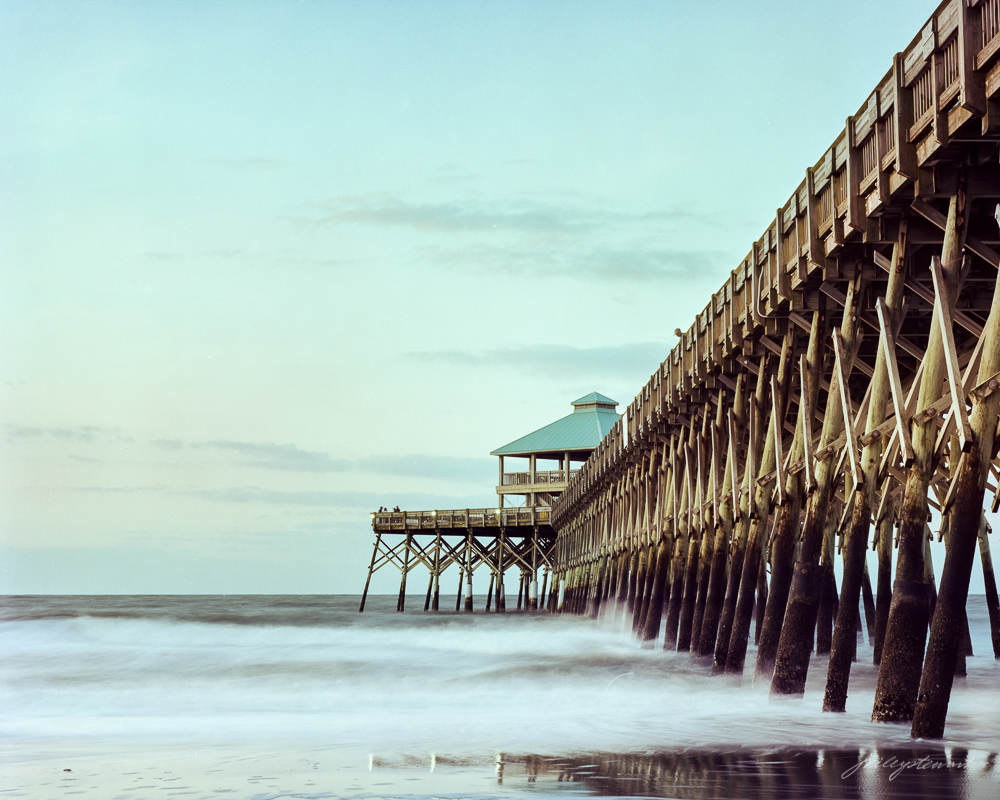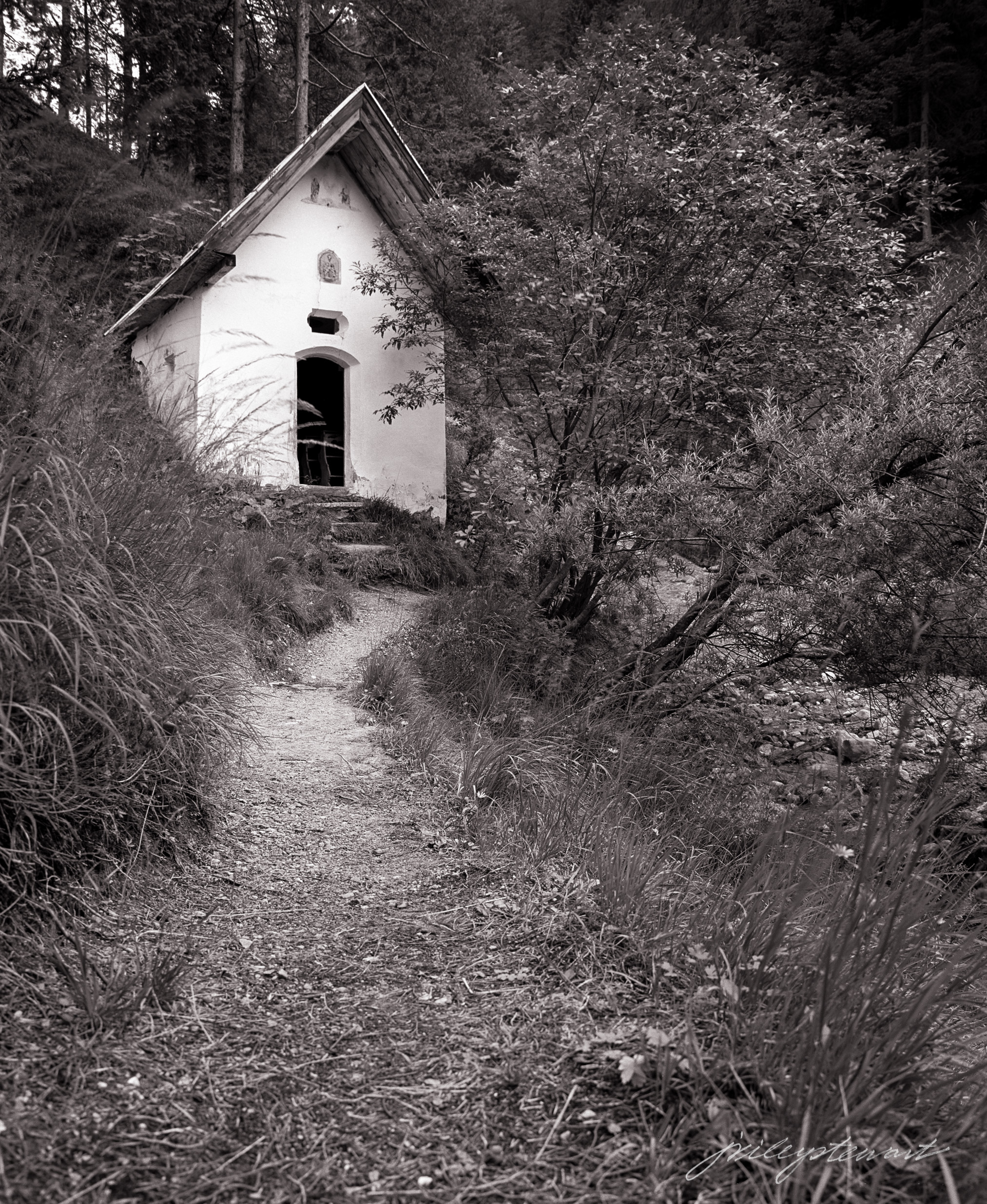I didn’t know what to expect. But a wedding hosted by good friends in Charleston, SC was a welcomed opportunity to see a bit of South Carolina’s Lowcountry for the first time.
My wife and I did the things all the guidebooks tell you to do when visiting Charleston: we walked the streets (stop it, now!), visited the local plantations, ate great food, and took a carriage ride. But there was so much more I wanted to do, photographically speaking.
If you want to photograph Charleston, the best time is before 9 am. At 9, the parking meters become active and fill up pretty fast. Parking in Charleston is a challenge after that time. As it happens, early morning is also the best time to photograph Charleston, so you’re in luck. The summer sun came up around 6am, so I had plenty of time to photograph the city uncrowded.
Most of what I really wanted to see, though, happened out in the rural Lowcountry: salt marsh, spanish moss hanging from the old oaks, historic plantation gardens, and the ocean, of course.
Folly Beach
The Folly Beach pier is probably photographed as much as the Statue of Liberty. There aren’t many ways to depict this structure that haven’t been tried already. I happened to catch this scene just at sunrise, so I had good light. Using a slow shutter speed to soften the waves and really bring out a sense of motion was important to me, and I purposely timed the wave movements to reveal the wet sand reflecting the lights from the end of the pier (which was tricky using a 1 sec shutter speed). The reflection was important compositionally.
A visit to Magnolia Plantation. Here’s another big tourist attraction, but if you look closely there are really great treasures to be found. One of the most interesting sights I found at Magnolia Plantation were the cypress groves. “Lowcountry Cypress” is full of light and shadows. Near the center of the frame is what appears to be a circle caused by a large arching limb and its reflection in the river that perfectly frames the brighter visual destination downriver. Along our visual journey, large cypress trees full of rich details entertain us.
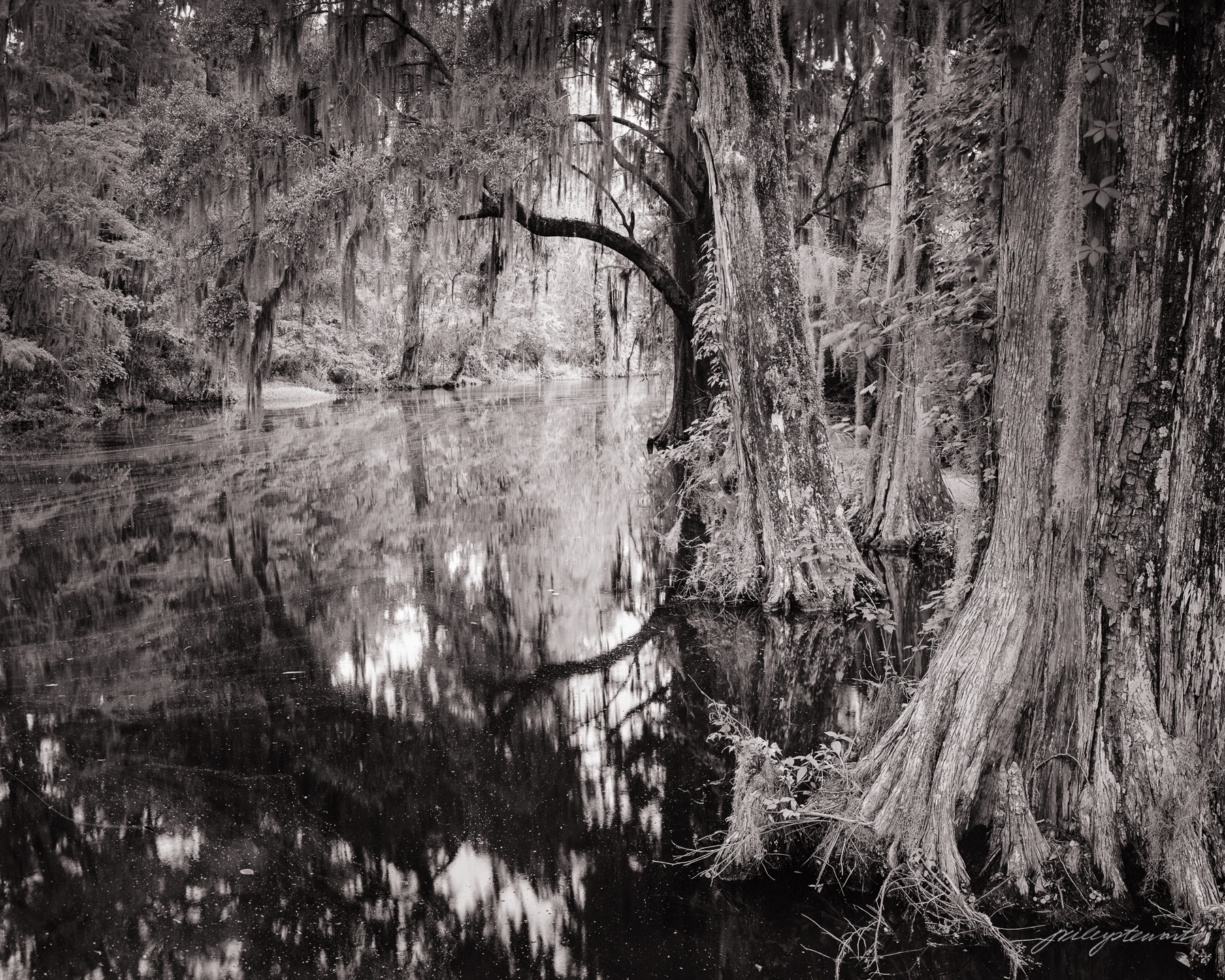
Characteristic of the Live Oaks found in the Lowcountry are the huge limbs that like to arch close to the ground. Spanish moss seem to love these limbs, and you often find it just hanging out there. The path is clear, under the arching limbs, and it’s a walk we must take. Spanish moss is very delicate, and I rarely found it just hanging still. The slightest breeze would send it dancing about. I chose to capture that motion in “Lowcountry Walk” because that’s part of the story, isn’t it?
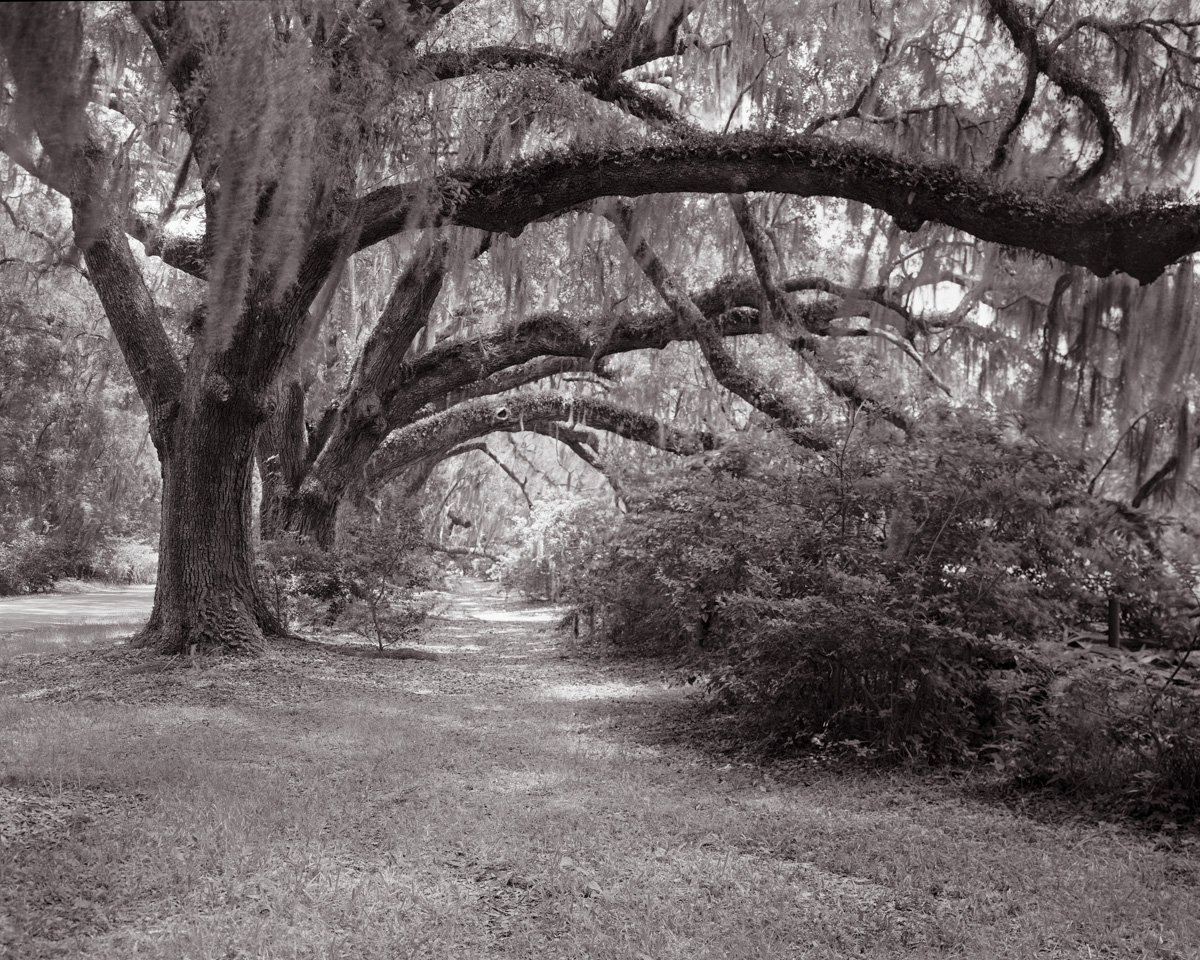
South Carolina Landing State Park
Long before there was a Charleston on the peninsula, there was a vibrant settlement across the Ashley River. It’s now a beautiful natural area with lots of large oaks and spanish moss. I got there late morning and the sun was already making it difficult to photograph, but I think I made the trip worthwhile. There was far too much green in this scene, so I did what I typically do when I find that situation: I shoot it in B&W and emphasize the shadows and penetrating sunlight.
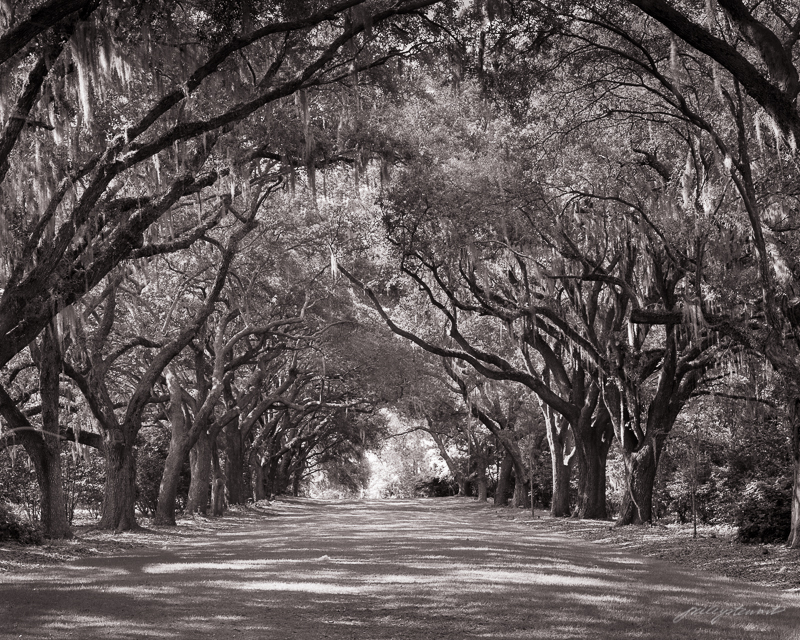
Edisto Island and Botany Bay Plantation
By far the most interesting site I visited on this trip, and one I’ll definitely return to again. A nature photographer’s paradise, this old plantation site has been turned into a protected wildlife management area.
A 1/4 mile walk through the salt marsh takes you to one of the most interesting beaches I’ve ever seen, Botany Bay beach. As a WMA, there are heavy fines for taking shells from here, and the pebbly beach is therefore covered with them. Many of the shells are intact and large. You almost never see these on public beaches. So what do people do when they can’t take their beach trophies home? They hang them on the numerous dead trees that also cover the beach. On another day, I might have found that sufficiently interesting to photograph. But not that day. My eye caught this lone, dead tree just waiting for the inevitable: it was a story that had to be told.
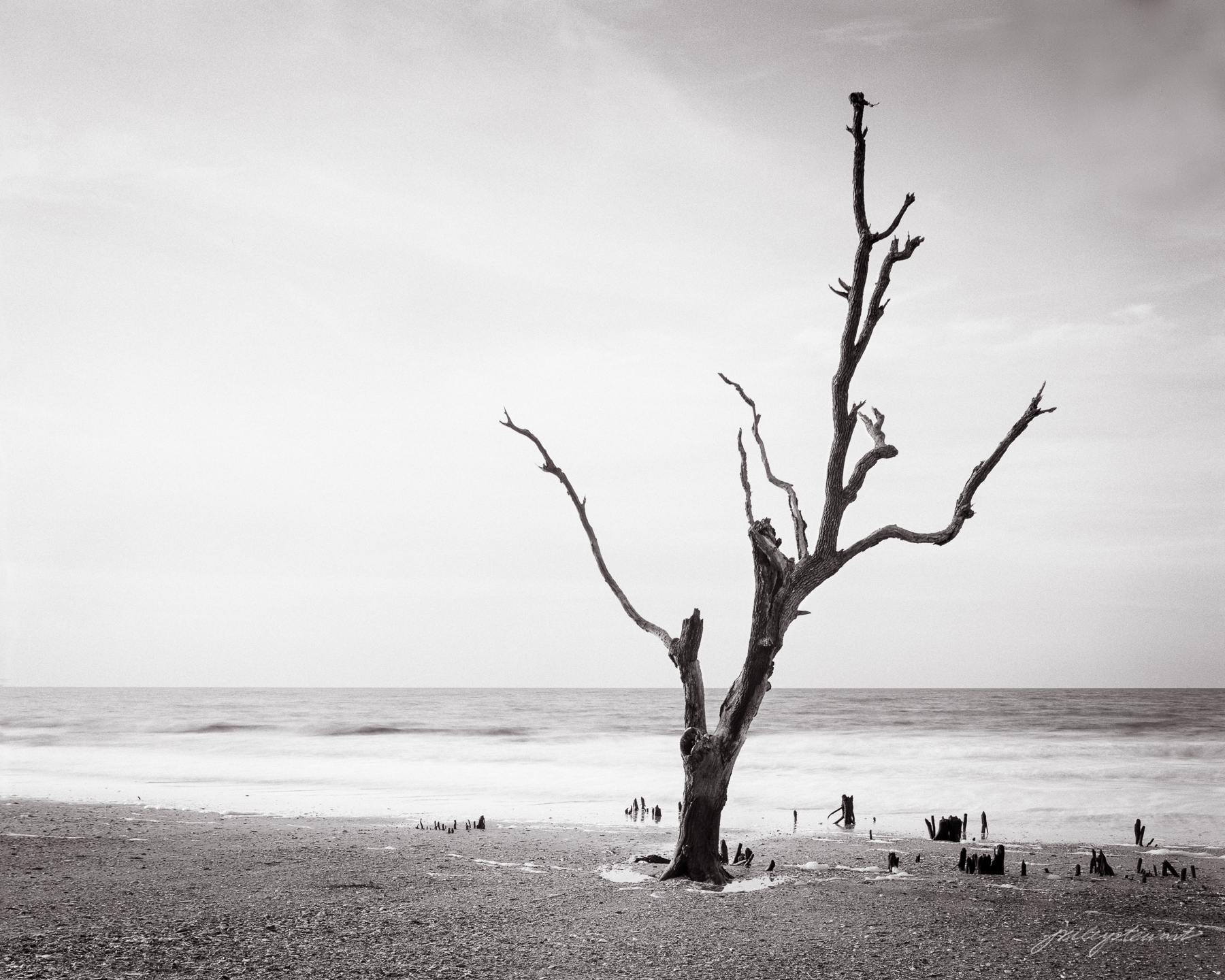
Also on Botany Bay are many dirt roads and trails. If you’ve been following me very long, you know I love tiny dirt roads. Perhaps it’s the relative solitude I find when traveling them, or maybe it’s that I really like driving at 15 mph. Doesn’t matter. What matters is that along one of these roads I found “Spanish Moss and a Palmetto.”
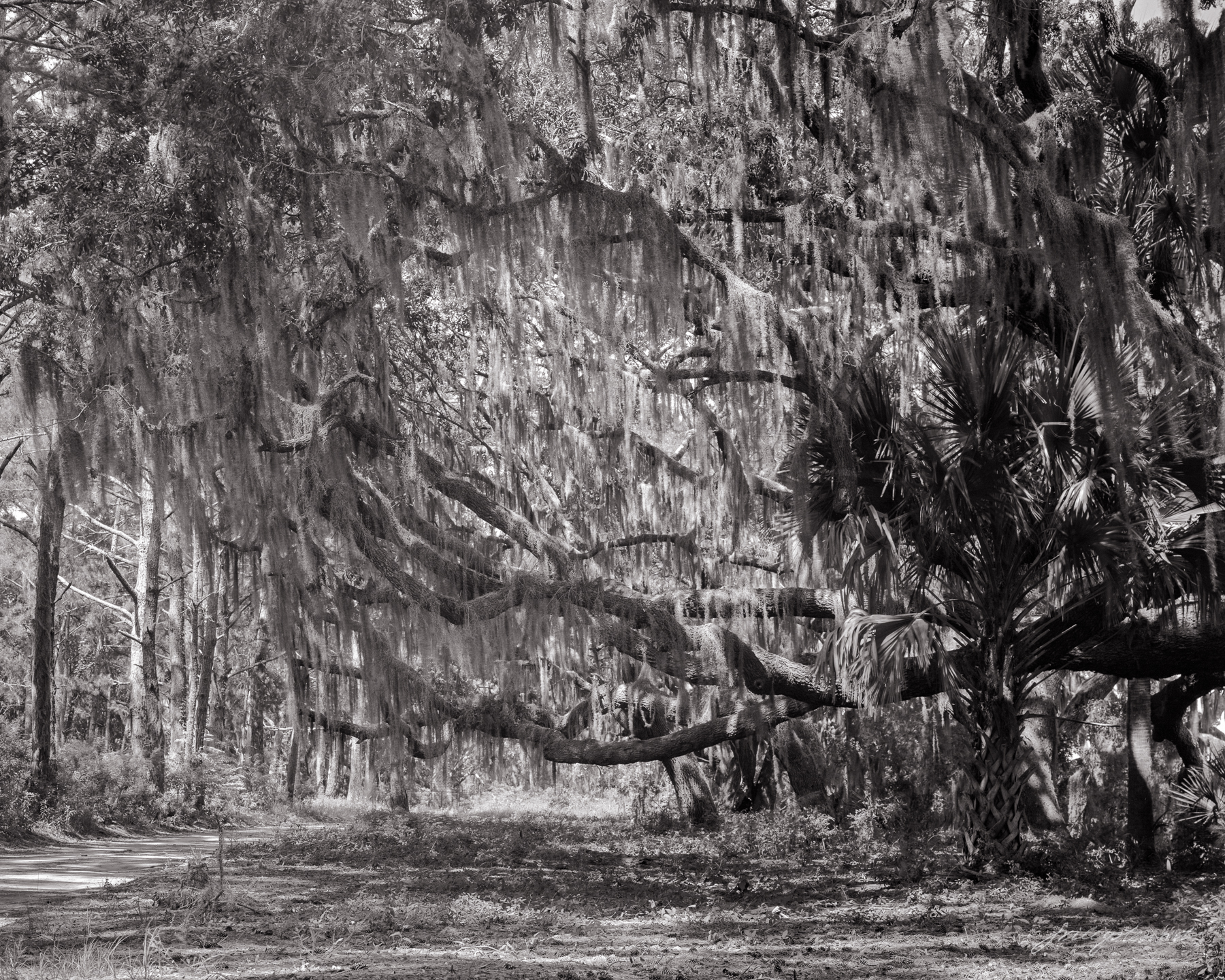
At first glance, this scene appears busy and chaotic, but the more you look, the simpler it gets. The main characters in this story are the soft, swaying moss bending slightly toward the right side of the frame, seemingly leading us to find this little Palmetto tree hiding in the shadows. You rarely see Palmettos in a shaded place like this, but there he/she is, seemingly content to be dominated by the oaks and a cloak of moss.
There remain a few buildings from the time when Botany Bay operated as a farming plantation. I love historic architecture. It’s easy for me to imagine the stories of those who occupied and/or worked in these old spaces, and I often find myself wondering about such things when I stumble upon them.
I didn’t know what this structure was when I found it on Botany Bay Plantation. Its highly decorated facade led me to believe that it must have been something special and probably close to the main manor, but I didn’t know. As it turns out, it was the icehouse: definitely special and definitely near a family dwelling, when it still stood. Now it sits alone in a clearing, surrounded by encroaching trees and the ubiquitous spanish moss.
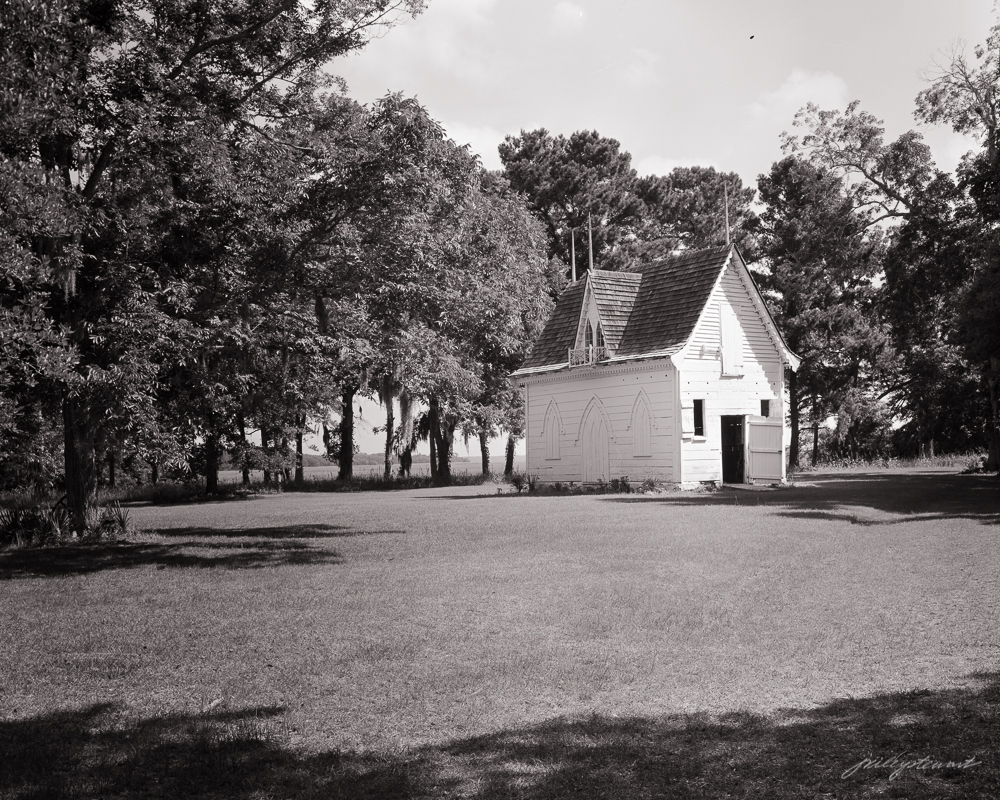
Angel Oak
No visit to the Carolina Lowcountry would be complete without a visit to the Angel Oak on John’s Island, SC. Words that describe this particular lifeform include “magnificent,” “ancient,” and “Godly.” This old fellow has been sitting on this spot for 1500 years, and since healthy oaks never stop growing, that’s a long time to get really huge.
Most photographs you see of Angel Oak include the whole tree, often with a person standing next to it. That perspective makes one get very far away from the tree because it’s so big.
But the story I wanted to tell about Angel Oak was more intimate: The story of how Resurrection Ferns take rook on the ancient branches-life from life. How the past loss of a limb still reveals the scars from that loss. How its branches bend and turn as events during its long life forced new directions, much as events during our own lives do. And how, like old people, its skin is heavily furrowed and worn. I offer “Enduring Arms” and “Neverending” as examples of these intimate portrayals of Angel Oak.
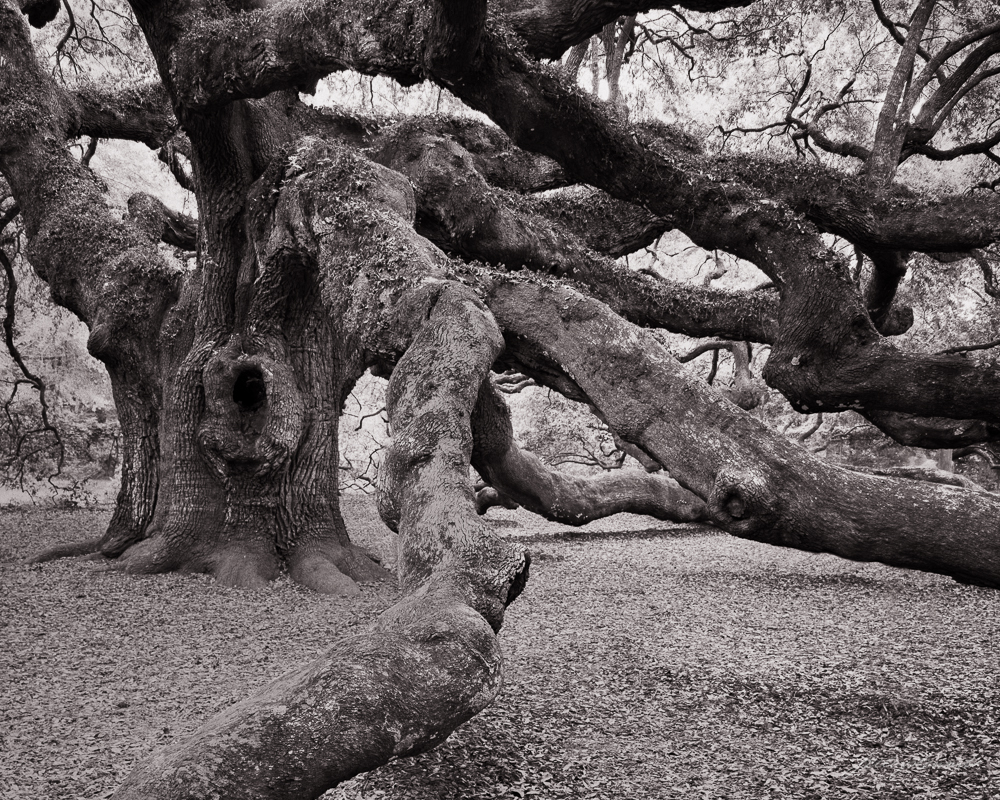
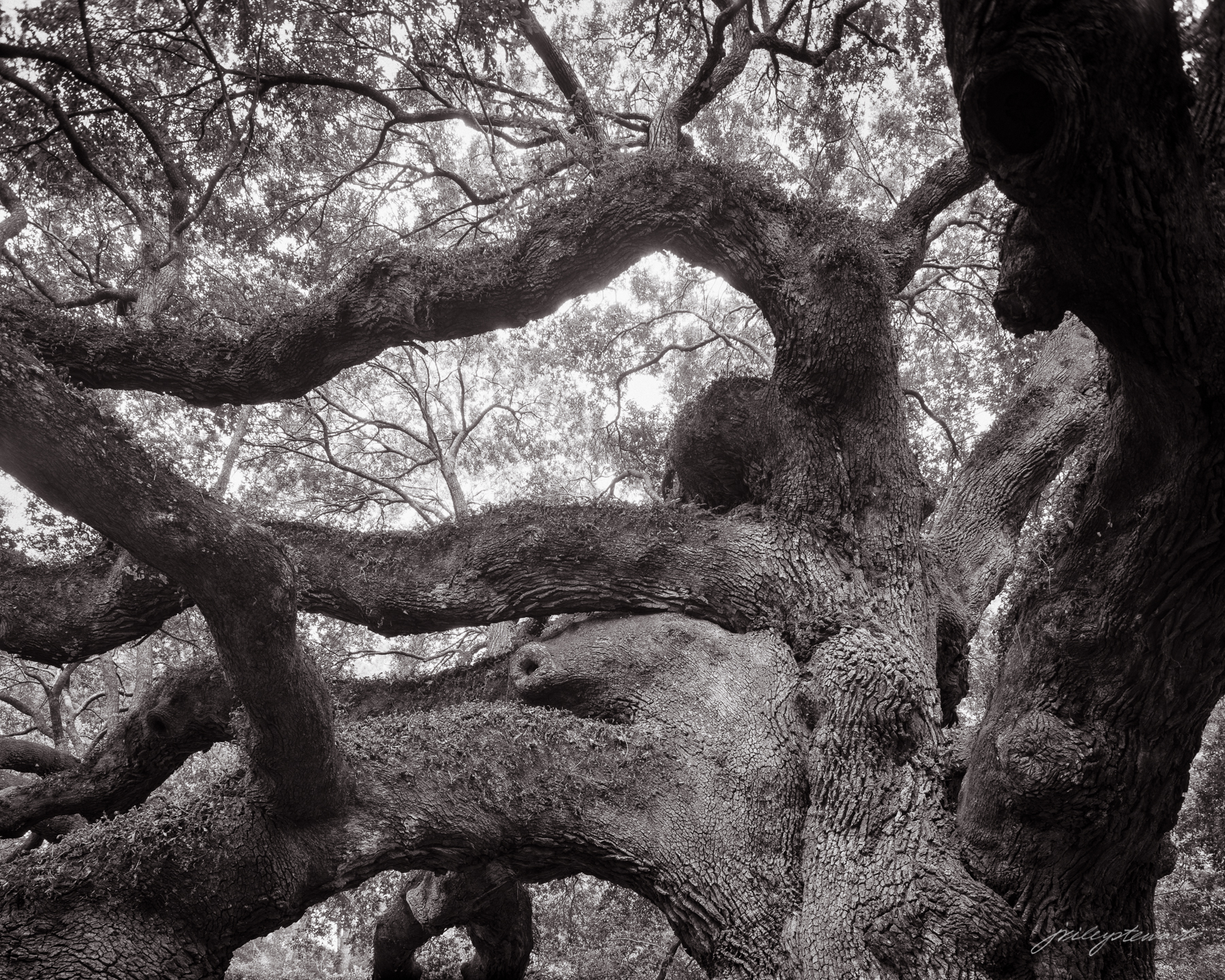
I hope this little travelogue has stimulated an interest in visiting the Carolina Lowcountry. The Lowcountry is much more than the city of Charleston.
Technical and Ordering Information: I captured these images using a 4×5 large format camera with either color (Kodak Ektar or Portra) or B&W (Ilford FP4) film, scanned the negatives to high resolution using my drum scanner, then artistically interpreted them.
Pigment prints on heavy cotton rag paper are available from 16×20 up to 32×40 inches, framed or unframed, with the surface varnished to provide protection and enhanced vibrancy and texture.
To order, go do Lowcountry photographs

